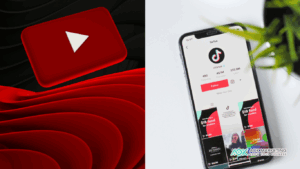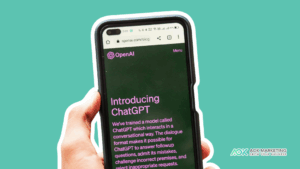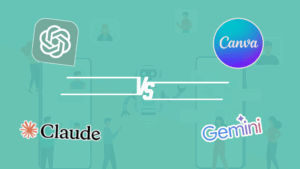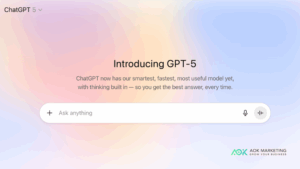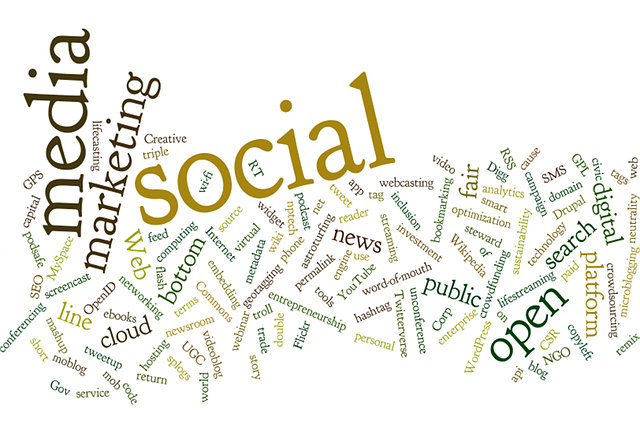
You should know, however, that sales is not all about presentation and it’s not even about fancy wording or persuasion. Believe it or not, sales is about interacting with your audience.
For so many store owners and entrepreneurs conversion rate means everything. It’s what makes or breaks their business. You can have a great business and a great web page, and even a compliment from someone you trust.
But if you’re not selling—meaning traffic conversion—then something is wrong and you have to change it. After designing a good site and store, analyzing and tweaking content for improved conversion rate is the next step.
What is the Funnel?
A sales funnel is a visual example of the process needed to sell an item. The funnel gives you an idea of how many prospects you have, according to various STAGES in the entire cycle. The conversion funnel starts, like the long end of the funnel shape, with a broad audience. As the funnel gets smaller, that audience dissipates and you end up with a much smaller, but still loyal audience that understands your point.
The funnel reveals how many prospects you should have according to stages while also detailing the conversion rates according to stage. Therefore the best way to determine how the funnel is doing is to focus on the number of opportunities in the formula, (basically this means the rate of arrival to your site), then the cash value of every deal, then the amount of time people spend in the funnel, then the percentage of closes that you get through with your website, in other words, the rate of winning.
You have to reasonably expect the funnel to get smaller by statistical logic alone; you can’t possibly win everyone over, because not everyone has the same needs or the same intensity of need. However, you can filter out the least useful viewers by your content and by your design, which allows you to further custom market to your best and most potentially profitable audience.
You start giving information that filters out the wrong kind of audience while drawing in your targeted audience, creating a funnel effect. You are not broadening content but niche-specifying it, and providing just the right kind of information your targeted users are searching for.
Tracking leads from clicking through to selling a product is the goal and many companies will use a professional analytics company to track PPC performance. However, this process does involve a straightforward agenda of using the best tools, rewriting your content with keyword strategies in mind and improving navigation and design.
Your Goals in Conversion Rate Analysis
The goal of an analytics campaign is to get inside the minds of your users, learning what changes you make actually impact their behavior, statistically speaking. This way you can better focus on communicating with the audience you actually have rather than worrying about the traffic that just comes and goes. Personalizing, or indeed the illusion of personalizing your sales pitch to each customer is important.
Specifically, your advisor will tell you to adjust the layout of the page, the elements, the overall design, and the creative elements, such as graphics, hook pages and so on. Design problems are usually involving:
- Confusing linking structure
- Difficult to read fonts and backgrounds
- Slow loading screens
- Amateur-looking design, or distracting features that do not enhance the message
Beyond these basics, much of the problem could be in poor quality copywriting and creative sales pages. Of course, by the time you pay for an elaborately designed website you’ve probably ensured that the web copy is of the highest quality.
But quality is not always the issue. Sometimes the problem can be in a mismanaged or even mis-targeted campaign. If your website does not sell the product that means you are not persuading the viewer, or if you are, then you have not activated the “need” to purchase the product. There could also be a problem with price, location or any number of elements.
These issues are not standardized and really do depend on the campaign itself. This is why professional analysis may be necessary, as analytics personnel, as well as automated software, will analyze possible shortcomings and then compare it to other data.
Testing is also an important element for layout and proper display on a number of devices. This is a common problem since more than half of all users use mobile devices and not desktop PCs. Backgrounds and images can also be distracting. Headlines can be lacking. Even alignment can be off.
You also have to factor in the excitement you generate, such as promotions, placement pricing and special pricing. Even pop ups used at just the right time can make a difference…or if done poorly, can be a huge distraction that costs you the sale.
The Three Fs
In sales the funnel is only one aspect to consider. The other two Fs, so to speak, are the Flow and the First Impression. The first impression has to be striking. This is your introduction. Sometimes text isn’t enough, unless you immediately reach out to your customer and offer a USP or Unique Selling Proposition.
Sometimes a graphic may work better, especially if your website is artistically inclined or is in hospitality. The “need” here and the incentive would be the art or artist him/herself. Once you make a good first impression, it’s time to keep the flow going, meaning you do nothing to distract from the coherent theme and message of the website. On the other hand, long paragraphs of text may be a risk if your audience just wants something fast, to the point and easy to buy.
It is commonly said in sales writing that the most valuable changes are the ones that happen lower down along the “funnel” of the page. This means strategic placement and one that naturally guides the user along the page until the entire end. This strategic approach works better than simply designing simple pages and distributing content evenly or according to personal taste. There has to be a strategy behind everything.
Testing allows you to take a chance and then respond to what the majority of users do./ You get to see how the changes you make cause a change in their behavior. Too many companies make changes, assuming something new will help sell, but they never actually stop to analyze the data and see where efficacy lies.
Some of the more popular testing tools include page movement analytics (such as enter and exit pages as well as time spent on pages), as well as newer tools like click maps (where most users click) and heat maps, where the mouse is moved, or the mobile unit touched on screen the most. Keyword spying is always tricky, as search engines like Google continue to update their algorithm, making it more difficult to find out what exactly people are searching for. A/B multivariate testing is also a specialized process that is recommended for studying people’s reactions to your content.
Landing Page Design
Not a lot of people realize yet that a landing page is FAR more likely to land traffic than a homepage. Most homepages contain general phrases, whereas a landing page contains specific and targeted information.
You have to ask yourself what does the landing page say about your company as well as the specific product you’re selling. You have limited space to create a message that’s easy to scan and that provides information on a keyword subject.
You also need outbound and inbound links – to your homepage, social media buttons, newsletter sign ups and shopping carts. Customizing the headline (for each keyword search), a summary of selling points and creating a clear call to action is a formula for success. Many companies also find it useful to include phone numbers, contact information and other action-oriented calls.
It’s interesting to note that professional conversion rate optimization companies will not necessarily require that your entire site be revamped. Sometimes the homepage is good and it’s only the landing pages that need a new layout. They can be done and they will not affect the rest of your site even though they are hosted on the same site. Your main site and all SEO planning will be completely compatible.
The problem is, most website services will only promise to improve your traffic conversion but not actually share with you any data they’ve found. What a comprehensive strategy does for you is find out through trial and error, experimentation and tracking, what DOES work and what DOES NOT.
A lot of companies promise the moon but they don’t deliver and they don’t explain why what they’re doing differently works or doesn’t work. No strategy is perfect. Nothing is guaranteed to work, particularly since it’s not exactly easy to predict what Google’s next algorithm update is going to bring.
What most companies mean they offer guaranteed results is that they will land you on the top 10 (not too hard to do) for a niche keyword, and they will do by analyzing and improving your BASIC website, SEO, landing page and sales conversion strategies.
However, they will not necessarily analyze your performance unless explicitly stated, because constant tracking and data measuring, as well as strategizing how to capitalize on trends, requires a lot greater time investment.
Make the Educated Choice
Learning what sells and doesn’t sell is a complex matter and one that involves your web presentation as well as your target audience and overall business strategy. You might be surprised when you actually analyze metrics and see what is working. Sometimes the best “looking” pages actually do NOT convert very well. But maybe they serve another purpose. Sometimes it’s all just a matter of what picture you select, or just a matter of tweaking the headline.
When it comes to analyzing the data you do have to be flexible. What works one month may very well fail the next month. How do you adapt? Are you, or is your team, on top of the matter and already planning a new strategy?
Remember, sales conversions involves both SEO and PPC campaigns as these are two different methods. A lot of people use PPC ads and landing pages to promote direct sales. But investing in a long-term SEO strategy can be done the same way and yes, it’s true—many viewers do take top 10 search results (with text previews) more seriously than sidebar ads.
You really have to be open-minded and look to see what works and you need someone who handles both evaluation and reaction full-time or at least consistently part-time. One major flaw in a lot of companies’ strategies is that there is no plan beyond hope. However, when you’re on a budget hoping to find an audience isn’t enough. You have to follow the leads, the sales, the evidence. That’s the only way to at least predict any substantial income.
Conversion Rate Optimization and A/B testing is the most effective way to convert sales. It’s as much a technical project as it is a sales project, one involving the creation of new offers, new designs and new ideas.
When choosing a company make sure you understand the timeline as well as the scope of the project. This is not by any means private information and the more the team discusses it with you, the better. Some companies can finish the assignment within a few months, while others may take less than a week—it just depends on project’s details.
Why not let a good company help you to design an excellent campaign? Not just a website or a landing page but a fully active and customizable campaign, and one that reacts according to new data? You will start noticing conversion improvement right away and will see firsthand how market research and strategizing makes all the difference.
About The Author
Dave Burnett
I help people make more money online.
Over the years I’ve had lots of fun working with thousands of brands and helping them distribute millions of promotional products and implement multinational rewards and incentive programs.
Now I’m helping great marketers turn their products and services into sustainable online businesses.
How can I help you?
